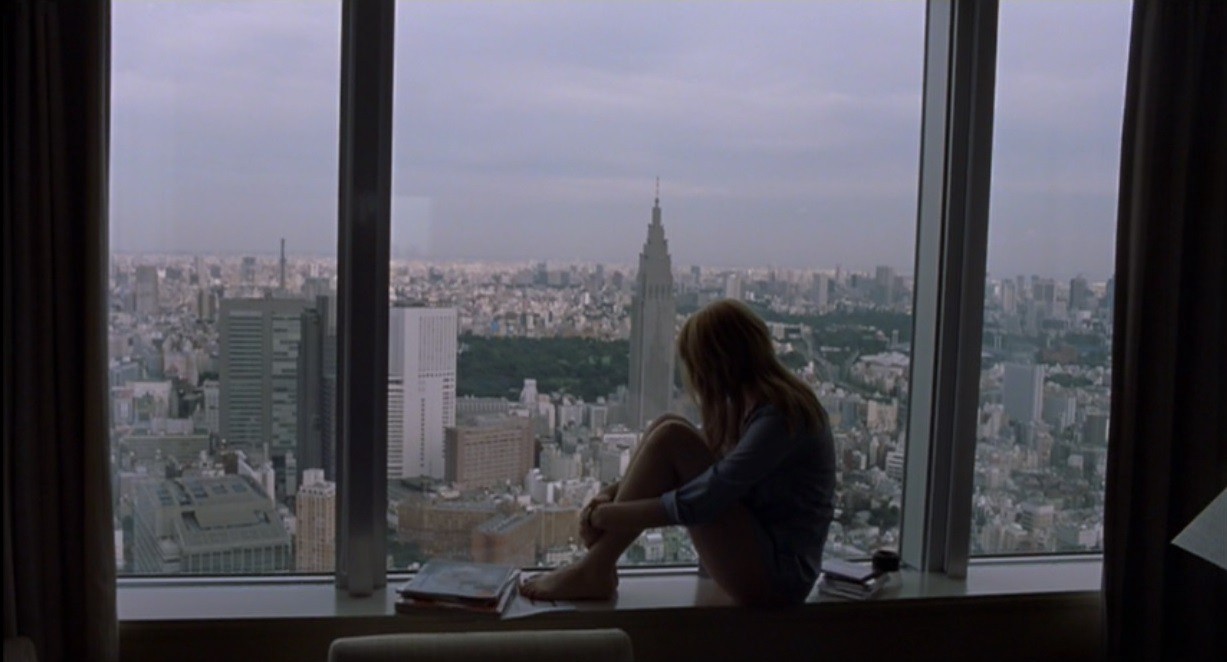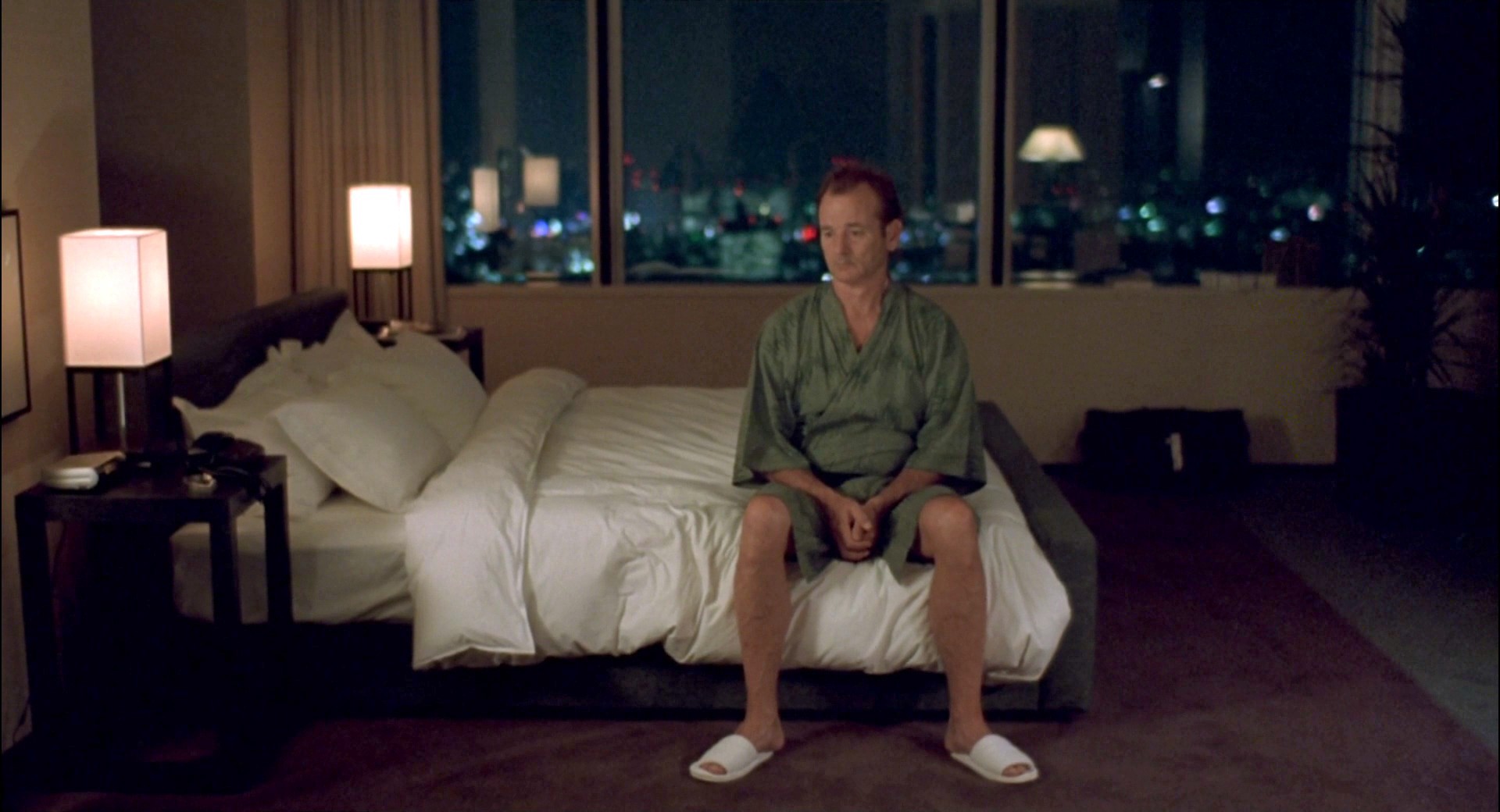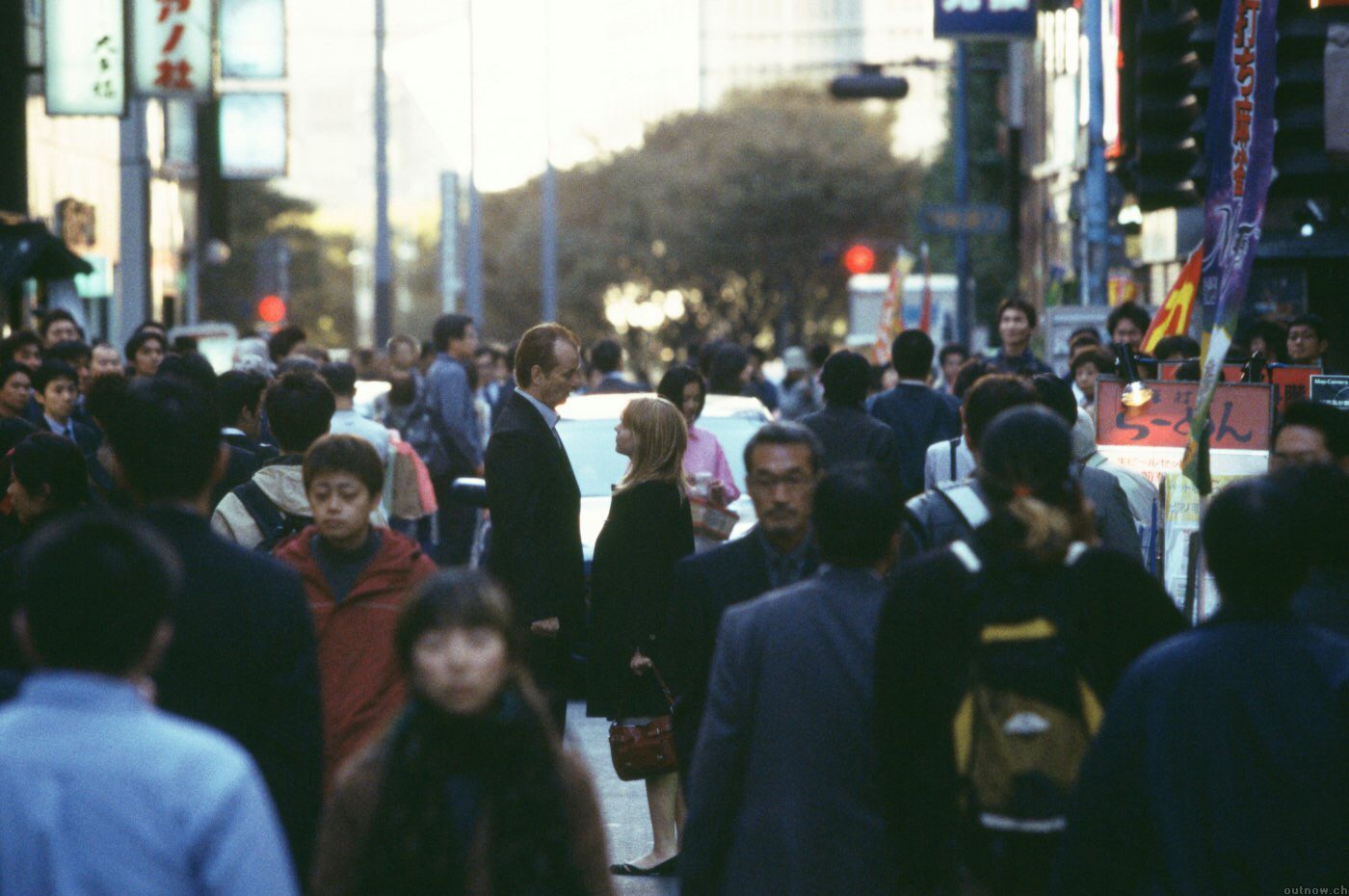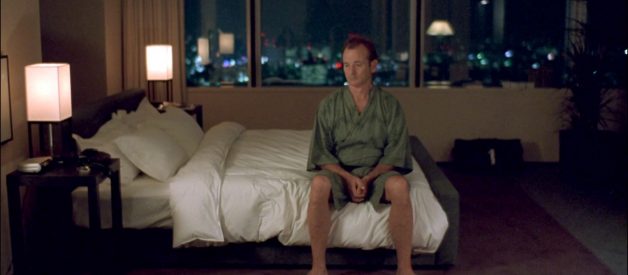
Welcome to Sculpting in Frames. Let?s talk about silence in film.
A motif that can too often go unnoticed or neglected when looking at movies where the director has made a conscious choice for there to be an absence of interaction, noise or dialogue. A film that does this spectacularly is Sofia Coppola?s ?Lost In Translation?.
Lost In Translation is a deeply personal portrait of love, relationships and isolation set in the backdrop of Tokyo?s incredible scenery. We follow Bob Harris, played expertly by Bill Murray giving one of the best dramatic turns of his career. As an aged Hollywood star in his twilight, Bob leads a deeply unhappy life full of disconnection from his wife and children. His life changes when he meets an equally lost soul of Charlotte, played by a young Scarlett Johansson. The two form an unusual romantic bond as they learn to live their lives fully ? and ultimately let go of the things that make them unhappy. It is a love story with no sweeping romance, it is a comedy without overt laughs, it is a drama of small stakes. I would call Lost In Translation none of these, but rather an exploration of what love means in the modern world.
Coppola uses silence in her films to great effect, whether it is backed by the melancholic soundtrack, the lively city life of Tokyo, or simply being with the characters in the frame ? with them in the moment. Silence in Coppola?s films offers us an insight into how our characters feel and invite us to think about how we would feel in their situation.
To further the motif of silence, Lost In Translation is a movie about what is unsaid. A film where characters spend the whole time communicating via technology (with phones, fax and notes) or by proxy through interpreters. Almost all of the direct conversation in the film is between Bob and Charlotte, as they are the only two people who understand one another. When minor characters, like John, speak to our main characters, they project and don?t say what they feel or really want. Look at the way John?s friends talk to Charlotte. They speak a lot without actually saying anything.
The setting of Lost In Translation adds to our character?s reflection. Tokyo, a metropolis of millions of people, is relegated to a view through a hotel window. The hotel itself is a contained microcosm of artificial life. It?s filled with oddities of Japanese culture, safe jazz music and people who are there to experience Japan without actually experiencing anything. The hotel suffocates Bob and Charlotte and it becomes a luxurious prison that keeps them from enjoying their lives. Furthermore, the fact our characters are literally surrounded by people speaking a different language, unable to properly to communicate with almost anyone outside the hotel, adds to their imposed silence.

Consider that, in my opinion, the most important parts of Lost In Translation are moments of silence, or reflection. Moments where our characters come to a realization, or a moment of reflection, or simply enjoy the presence of the other. That is where I think this movie shines. Creating two people, who are very alone and find part of themselves in one another.
In the final scene, as Bob says goodbye to Charlotte, knowing that their circumstances means that they could never truly be together. The last words they share are left intentionally silent. As Bob is driven to the airport, he leaves in the same way he arrived, in silence. Yet, he is changed by the city, by Charlotte and by himself and as the Tokyo cityscape envelops him, the screen fades to black and leaves us ? in silence.



